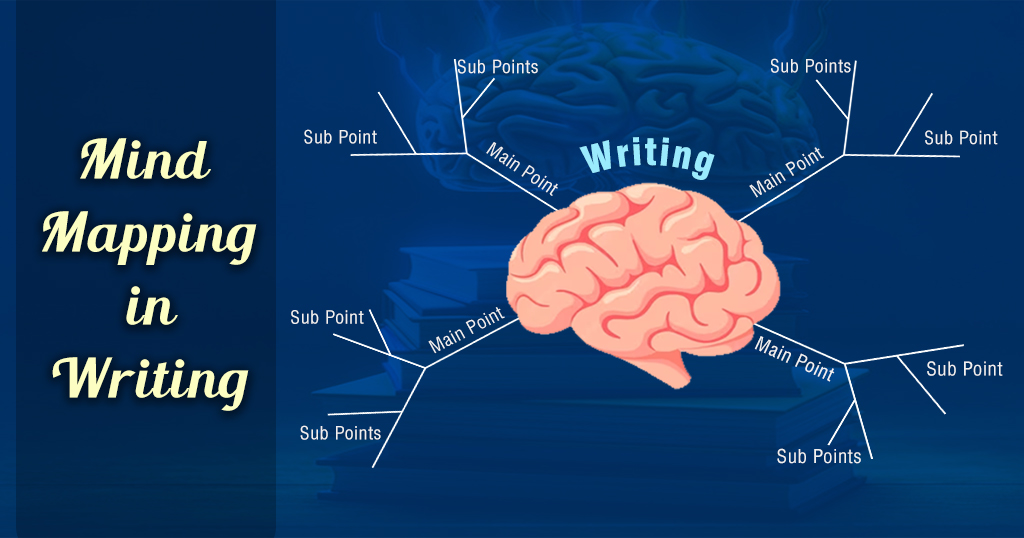Introduction:
A Mind Mapping is a more free approach to brainstorming ideas. Mind maps frees you from following strict rules and order, you can put your ideas down visually, centered around a main idea. This helps you analyze and recollect things better because it follows how your brain naturally works.
Typically, a mind map is when you start with a main idea and then think of other ideas that extend the main theme. These ideas are around the main one, like branches on a tree. By doing this, you can see how different ideas are interrelated.
Benefits of Mind Mapping in Writing:
They have lots of benefits. Here are some of them:
Enhancing Creativity:
If you’re working on a project and need to brainstorm ideas, consider using mind maps. These visual representations of knowledge encourage creativity and facilitate faster idea generation.
Simplifying Complex Concepts:
When you encounter intricate ideas, breaking them down into more understandable forms is essential. This method guarantees that your audience can easily understand and access the main idea, making it simpler for them to comprehend the essential point.
Helps in learning new concepts:
To help you focus better and come up with more creative ideas, as well as stay organized and communicate more clearly, you might want to try using mind maps. With new knowledge, you understand its connections and relevance to everything you already know. For instance, as you learn the names and incorporation histories of all the states, you link this information with other abstract knowledge you have or will acquire in the future.
Improved Productivity:
Mind mapping helps you come up with ideas faster, learn faster, and talk better. These are really important skills for any business. If you can do these things effectively and efficiently, it saves time and makes your work better. A Mind Mapping Software Blog survey found that using mind maps could improve productivity by around 23% on average.
Adds Flexibility:
As mind maps are not a free approach to brainstorming ideas, Mind maps are handy tools that can be used for lots of different things, like studying, coming up with ideas, planning projects, and brainstorming.
Let us look at an example of how mind mapping helps in writing complex articles:
There are different methods for handling content workflow, but managing content production and planning can sometimes prove an uphill task. Mind maps offer a solution to organize your business’s content marketing strategies effectively.
This method is very effective in ranking content for various keywords. You can typically use mind maps to outline three things:
- The main content structure
- Supporting content ideas
- Internal links connecting related pages.

The evolution of the mind map:
Using diagrams to visually represent information has a long history. The roots of mind mapping can be traced back to various historical figures and practices. One notable example is the visualization techniques used by Porphyry of Tyros in the 3rd Century to represent Aristotle’s Categories. Philosopher Ramon Llull (1235–1315) also employed similar methods to organize and present information.
The modern concept of mind mapping, as we understand it today, was coined by Tony Buzan in the latter half of the 20th century. Buzan introduced the term “mind map” and developed a structured approach to visually representing ideas and information. His method involves starting with a central idea and branching out to connect related concepts, using images, colors, and keywords to stimulate creativity and aid memory.
Buzan’s contributions, drawing from psychology, neuroscience, and his own experiences, have significantly influenced the widespread adoption and development of mind-mapping techniques across various fields, including education, business, and personal development.
Conclusion:
Regardless of whether you’re a student, working professional, or involved in creative endeavors, mind mapping serves as a valuable method for structuring your thoughts and concepts in a concise and visually appealing manner.
Incorporating mind mapping into your routine can enhance memory retention, problem-solving capabilities, and communication proficiency.
By following the guidance and utilizing the tools provided in this piece, you’ll be equipped to develop compelling and influential mind maps efficiently.
Also Read: Submission Guidelines for Your Manuscript



